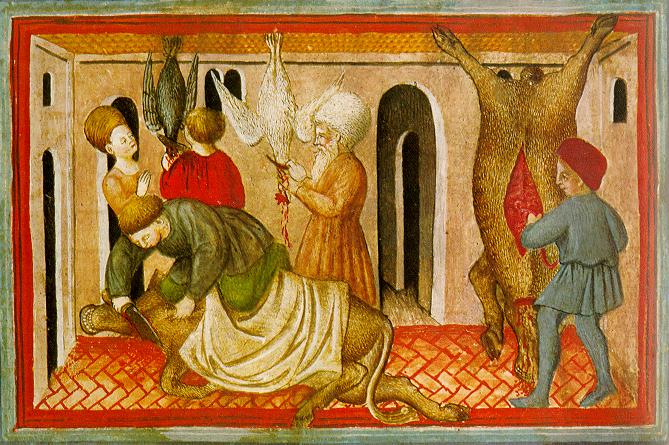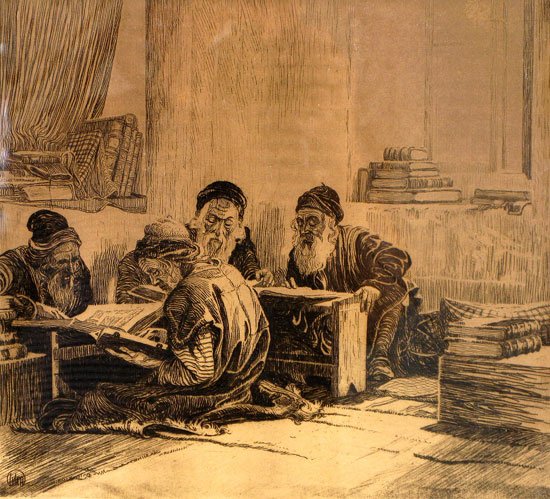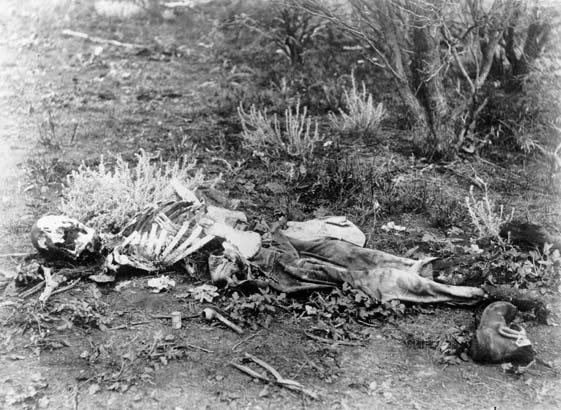|
Qemant People
The Qemant (also known as western Agaws) are a small Cushitic ethnic group in northwestern Ethiopia, specifically in Gondar, Amhara Region. The Qemant people traditionally practiced an early Pagan-Hebraic religion; however, most members of the Qemant are followers of the Ethiopian Orthodox Church. They are historically related to, but distinct from, the Beta Israel.Gamst (1969), p.67 The ethnicity's population is reported to be 172,000, according to the 1994 national census; the latest available national census, the one performed in 2007, does not list them as a separate group. However, only 1,625 people still speak Qimant, and it is considered endangered, as most children speak Amharic; likewise, adherence to the traditional religion has dropped substantially, as most of the population has converted to Christianity. Converts often consider themselves to be Amharas. The Qemant live in an area traditionally called Qwara, along an axis stretching from Ayikel in Chilga woreda to ... [...More Info...] [...Related Items...] OR: [Wikipedia] [Google] [Baidu] |
Qimant Language
The Qimant language is a highly endangered language spoken by a small and elderly fraction of the Qemant people in northern Ethiopia, mainly in the Chilga woreda in Semien Gondar Zone between Gondar and Metemma. Classifications The language belongs to the western branch of the Agaw languages. Other (extinct) varieties of this branch are Qwara and Kayla. Along with all other Cushitic languages, Qimant belongs to the Afroasiatic language family. Geographic distribution and sociolinguistic situation Qimant is the original language of the Qemant people of North Gondar Zone, Ethiopia. Although the ethnic population of the Qemant was 172,327 at the 1994 census, only a very small fraction of these speak the language nowadays. All speakers live either in the Chilga or Lay Armachiho woredas.see map in The number of first-language speakers is 1,625, the number of second language speakers 3,450. All speakers of the language are older than 30 years, and more than 75% are older t ... [...More Info...] [...Related Items...] OR: [Wikipedia] [Google] [Baidu] |
Woreda
Districts of Ethiopia, also called woredas (; ''woreda''), are the third level of the administrative divisions of Ethiopia – after ''List of zones of Ethiopia, zones'' and the ''Regions of Ethiopia, regional states''. These districts are further subdivided into a number of Ward (country subdivision), wards called ''kebele'' neighbourhood associations, which are the smallest unit of local government in Ethiopia. Overview Districts are typically collected together into List of zones of Ethiopia, zones, which form a Regions of Ethiopia, region; districts which are not part of a zone are designated Special Districts and function as autonomous administrative division, autonomous entities. Districts are governed by a council whose members are directly elected to represent each Wards_of_Ethiopia, ''kebele'' in the district. There are about 670 rural districts and about 100 urban districts. Terminology varies, with some people considering the urban units to be ''woreda'', while ot ... [...More Info...] [...Related Items...] OR: [Wikipedia] [Google] [Baidu] |
Books Of Kings
The Book of Kings (, ''Sefer (Hebrew), Sēfer Malik, Məlāḵīm'') is a book in the Hebrew Bible, found as two books (1–2 Kings) in the Old Testament of the Christian Bible. It concludes the Deuteronomistic history, a history of ancient Israel also including the books of Book of Joshua, Joshua, Book of Judges, Judges, and Books of Samuel, Samuel. Biblical commentators believe the Books of Kings mixes legends, folktales, miracle stories and "fictional constructions" in with the annals for the purpose of providing a Theology, theological explanation for the Siege of Jerusalem (587 BC), destruction of the Kingdom of Judah by Babylon in c. 586 BC and to provide a foundation for a return from Babylonian captivity, Babylonian exile.Sweeney, p1/ref> The two books of Kings present a history of ancient Israel and Judah, from the death of King David to the release of Jehoiachin from imprisonment in Babylon—a period of some 400 years (). Scholars tend to treat the books as cons ... [...More Info...] [...Related Items...] OR: [Wikipedia] [Google] [Baidu] |
Book Of Genesis
The Book of Genesis (from Greek language, Greek ; ; ) is the first book of the Hebrew Bible and the Christian Old Testament. Its Hebrew name is the same as its incipit, first word, (In the beginning (phrase), 'In the beginning'). Genesis purports to be an account of the Genesis creation narrative, creation of the world, the early history of humanity, and the Jews#Origins, origins of the Jewish people. In Judaism, the theological importance of Genesis centers on the covenants linking God in Judaism, God to his chosen people and the people to the Promised Land. Genesis is part of the Torah or Pentateuch, the first five books of the Bible. Tradition credits Moses as the Torah's author. However, there is scholarly consensus that the Book of Genesis was composed several centuries later, after the Babylonian captivity, Babylonian Babylonian captivity, captivity, possibly in the fifth century BC. Based on the scientific interpretation of Archaeology, archaeological, Genetics, genetic, ... [...More Info...] [...Related Items...] OR: [Wikipedia] [Google] [Baidu] |
Abraham
Abraham (originally Abram) is the common Hebrews, Hebrew Patriarchs (Bible), patriarch of the Abrahamic religions, including Judaism, Christianity, and Islam. In Judaism, he is the founding father who began the Covenant (biblical), covenantal relationship between the Jewish people and God in Judaism, God; in Christianity, he is the spiritual progenitor of all believers, whether Jewish or gentile, non-Jewish; and Abraham in Islam, in Islam, he is a link in the Prophets and messengers in Islam, chain of Islamic prophets that begins with Adam in Islam, Adam and culminates in Muhammad. Abraham is also revered in other Abrahamic religions such as the Baháʼí Faith and the Druze, Druze faith. The story of the life of Abraham, as told in the narrative of the Book of Genesis in the Hebrew Bible, revolves around the themes of posterity and land. He is said to have been called by God to leave the house of his father Terah and settle in the land of Canaan, which God now promises to Ab ... [...More Info...] [...Related Items...] OR: [Wikipedia] [Google] [Baidu] |
Bible
The Bible is a collection of religious texts that are central to Christianity and Judaism, and esteemed in other Abrahamic religions such as Islam. The Bible is an anthology (a compilation of texts of a variety of forms) originally written in Hebrew, Aramaic, and Koine Greek. The texts include instructions, stories, poetry, prophecies, and other genres. The collection of materials accepted as part of the Bible by a particular religious tradition or community is called a biblical canon. Believers generally consider it to be a product of divine inspiration, but the way they understand what that means and interpret the text varies. The religious texts were compiled by different religious communities into various official collections. The earliest contained the first five books of the Bible, called the Torah in Hebrew and the Pentateuch (meaning 'five books') in Greek. The second-oldest part was a collection of narrative histories and prophecies (the Nevi'im). The third co ... [...More Info...] [...Related Items...] OR: [Wikipedia] [Google] [Baidu] |
Sacred Grove
Sacred groves, sacred woods, or sacred forests are groves of trees that have special religious importance within a particular culture. Sacred groves feature in various cultures throughout the world. These are forest areas that are, for the most part, untouched by local people and often protected by local communities. They often play a critical role in protecting water sources and biodiversity, including essential resources for the groups that protect them. They were important features of the mythological landscape and cult practice of Celtic, Estonian, Baltic, Germanic, ancient Greek, Near Eastern, Roman, and Slavic polytheism. They are also found in locations such as India (Maharashtra, Karnataka, Kerala, and Tamil Nadu), Japan ( sacred shrine forests), China ( Fengshui woodland), West Africa and Ethiopia ( church forests). Examples of sacred groves include the Greco-Roman '' temenos'', various Germanic words for sacred groves, and the Celtic '' nemeton'', which was la ... [...More Info...] [...Related Items...] OR: [Wikipedia] [Google] [Baidu] |
Shechita
In Judaism, ''shechita'' (anglicized: ; ; ; also transliterated ''shehitah, shechitah, shehita'') is ritual slaughtering of certain mammals and birds for food according to ''kashrut''. One who practices this, a kosher butcher is called a ''shochet''. Biblical sources Deuteronomy 12:21 states that sheep and cattle should be slaughtered "as I have instructed you", but nowhere in the Torah are any of the practices of ''shechita'' described. Instead, they have been handed down in Rabbinic Judaism's Oral Torah, and codified in ''halakha''. Species The animal must be of a permitted species. For mammals, this is restricted to ruminants which have split hooves. For birds, although biblically any species of bird not specifically excluded in Deuteronomy 14:12–18 would be permitted, doubts as to the identity and scope of the species on the biblical list led to rabbinical law permitting only birds with a tradition of being permissible. Fish do not require kosher slaughter to be ... [...More Info...] [...Related Items...] OR: [Wikipedia] [Google] [Baidu] |
Rabbinic Judaism
Rabbinic Judaism (), also called Rabbinism, Rabbinicism, Rabbanite Judaism, or Talmudic Judaism, is rooted in the many forms of Judaism that coexisted and together formed Second Temple Judaism in the land of Israel, giving birth to classical rabbinic Judaism, which flourished from the 1st century CE to the final redaction of the Babylonian Talmud in c. 600. Mainly developing after the destruction of the Jerusalem Temple (70 CE), it eventually became the normative form of Judaism. Rabbinic Judaism has been an orthodox form of Judaism since the 6th century CE, after the codification of the Babylonian Talmud. It has its roots in the Pharisaic school of Second Temple Judaism and is based on the belief that Moses at Mount Sinai received both the Written Torah (''Torah she-be-Khetav'') and the Oral Torah (''Torah she-be-al Peh'') from God. The Oral Torah explains the Written Torah, and it was the rabbis claimed that it was them who possessed this memorized and orally transmitte ... [...More Info...] [...Related Items...] OR: [Wikipedia] [Google] [Baidu] |
Kashrut
(also or , ) is a set of Food and drink prohibitions, dietary laws dealing with the foods that Jewish people are permitted to eat and how those foods must be prepared according to halakha, Jewish law. Food that may be consumed is deemed kosher ( in English, ), from the Ashkenazi Hebrew, Ashkenazi pronunciation of the term that in Sephardi Hebrew, Sephardi or Modern Hebrew is pronounced ''kashér'' (), meaning "fit" (in this context: "fit for consumption"). Food that may not be consumed, however, is deemed treif ( in English, ), also spelled treyf (). In case of objects the opposite of kosher is pasúl ( in English, Yiddish: פָּסוּל). Although the details of the laws of are numerous and complex, they rest on a few basic principles: * Only certain types of mammals, birds, and fish, Kosher animals, meeting specific criteria are kosher; the consumption of the flesh of any animals that do not meet these criteria, such as pork, frogs, and shellfish, is forbidden, except ... [...More Info...] [...Related Items...] OR: [Wikipedia] [Google] [Baidu] |
Anthropology
Anthropology is the scientific study of humanity, concerned with human behavior, human biology, cultures, society, societies, and linguistics, in both the present and past, including archaic humans. Social anthropology studies patterns of behaviour, while cultural anthropology studies cultural meaning, including norms and values. The term sociocultural anthropology is commonly used today. Linguistic anthropology studies how language influences social life. Biological anthropology, Biological (or physical) anthropology studies the biology and evolution of Human evolution, humans and their close primate relatives. Archaeology, often referred to as the "anthropology of the past," explores human activity by examining physical remains. In North America and Asia, it is generally regarded as a branch of anthropology, whereas in Europe, it is considered either an independent discipline or classified under related fields like history and palaeontology. Etymology The abstract noun ''wikt ... [...More Info...] [...Related Items...] OR: [Wikipedia] [Google] [Baidu] |








